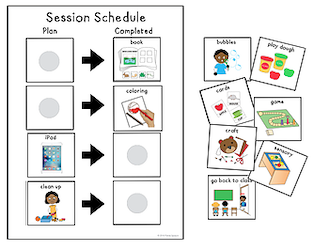Accommodating Students with ADHD During a Pandemic
Over the past number of years, our classrooms have made so much progress with what they physically look like. Long gone were the days of frontal teaching with students sitting at individual desks in rows. We had flexible seating, collaborative work areas, standing stations, bean bag chairs, wiggle stools and so much more. Students were moving about the classroom seeking feedback from peers and teachers while working closely with others in groups in order to think, problem-solve, question, and learn. This type of classroom environment benefited all types of learners, and especially students with Attention Deficit Hyperactive Disorder (ADHD) who needed more movement and flexibility throughout their day. And yet, due to a global pandemic here we are; back to individual desks, safely spread out with the teacher primarily at the front. So how is this working for our students with ADHD? Surprisingly well! At the OJCS we continue to be forward-thinking with how we support our students. We knew that learning in this type of setting would pose increased challenges for our students who need to move their bodies. But this is true for all students, not just our students with ADHD, and so we carefully planned as a faculty, with how we could continue to make that happen. We used grant money to purchase individual resources and tools for each classroom for individual and personal use. We bought therapeutic ball chairs for students who benefit from movement, individual standing desks, bouncy bands for chairs, fidget tools to keep hands busy, wiggle cushions, noise-canceling headphones, desk dividers, and more. In addition to the added equipment, we also added daily outdoor movement time for each classroom, in addition to teachers being very creative in creating at the desk movement activities.
We know that many students with ADHD have a lot to deal with. Here is a nice visual from The Contented Child that helps to highlight some of the lagging skills associated with ADHD. Click here for the visual from TES resources. https://sharemylesson.com/partner/tes-resource-team
What about our distance learners and if more students need to pivot back to working from home in the weeks or months to come? What can parents do to set up a child with ADHD for success at home? In some ways, it may be easier as there is likely more opportunity for natural movement without the fear of safety. In other ways, it may be more difficult as your child may have difficulty paying attention while working on a computer versus paying attention while in a classroom setting. Here are some tips for setting up the home environment; whether that be for homework time, or distance learning time. These tips are great for all learners but may be especially helpful for learners with ADHD.
- Find a consistent work station for your child. This work station should mimic what works well for your child in the classroom. Does your child use a wiggle cushion, benefit from standing, work best with a fidget tool? These should be replicated and used at home.
- You should build in structured break times and encourage your child to do something active. When it says physical education or recess time on the schedule, make sure your child is running and playing outside or doing something active at home. Movement is so important to help all children focus. Before and/or after homework, your child should engage in something active.
- Ensure that all the materials are accessible and available and returned to their proper location after use. Having all the tools needed to accomplish tasks is an important part of setting your child up for success. Does your child have access to pencils, paper, scissors, glue, a laptop/computer or i-pad, charging cords, books, etc..? Does your child know where to find these items and where they should be returned when they are finished?
- Looking at the distance learning schedule or the homework expectations in advance is essential for time management and planning for a successful day. Goal setting and planning a schedule are so important in helping a child be successful when working at home. Creating a visual schedule, to-do lists, and check off boxes often help a child follow the expectations for the day. Timers and structure are also really helpful in keeping a child on track. Teachers can help students and families set up these types of organizational tools if needed. Feel free to email me at s.reichstein@theojcs.ca for additional tips.
- Empowering your child to be more self-motivated and self-directed learners is an important life skill. Please read this blog post for a reminder on how to help promote these skills.
- Work with your child to discuss what is working and what is not. Your child will ‘buy-in’ to problem-solving when they are part of brainstorming the solution. If your child is not being successful with completing tasks at home, talk to your child about why and what they can do to improve that weakness. Eliminate power struggles, yelling, and meltdowns over schoolwork. Feel free to re-read this blog post for additional tips to eliminate the at-home battles.
As always, we are committed to working in collaboration with families to help support the needs of your child. Whether your child has ADHD or not, we are happy to connect and discuss ways to help your child be more successful with their learning journey both at home and at school. A pandemic will not stop us from being committed to accommodate individual learning needs.




